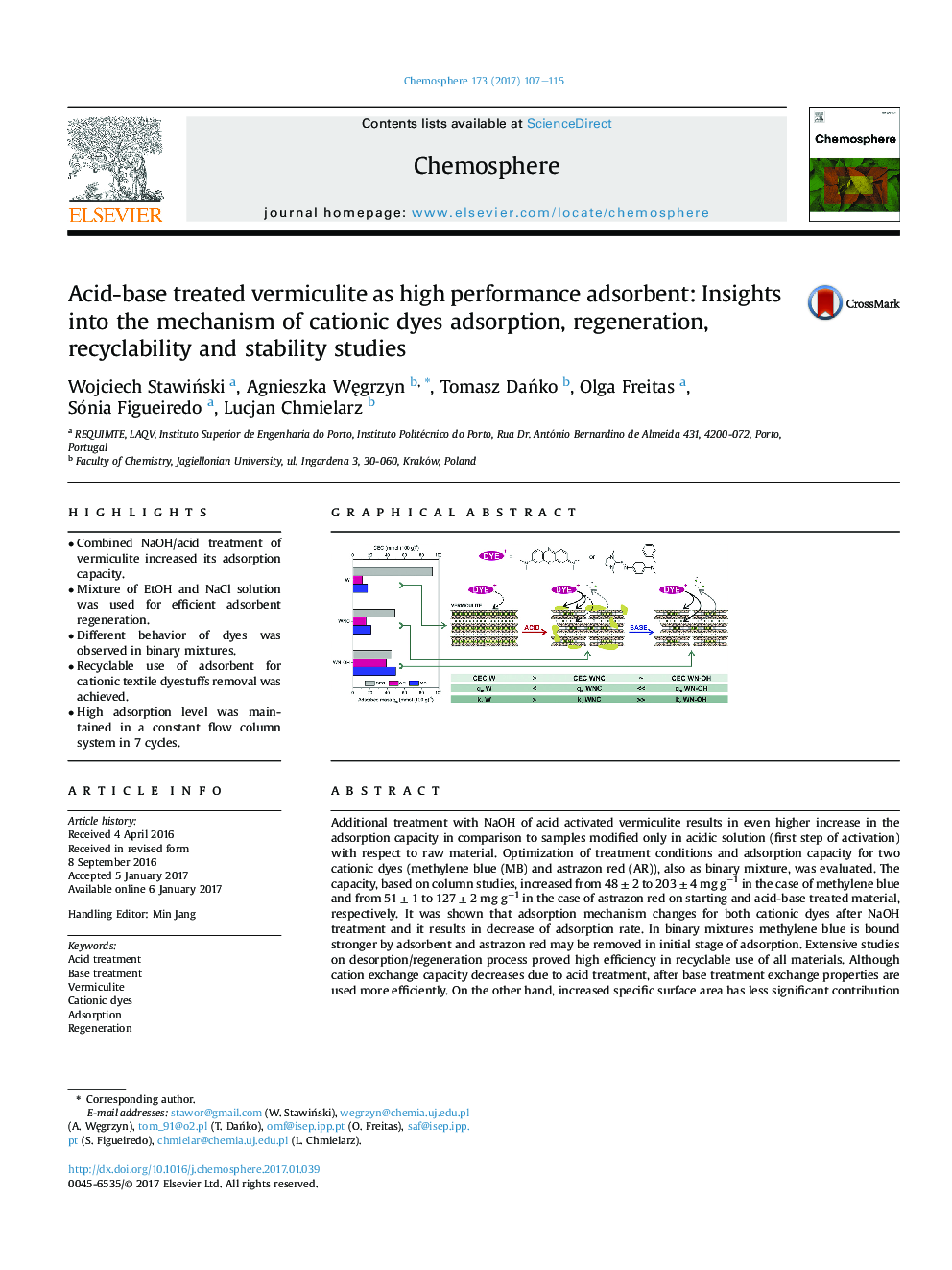| Article ID | Journal | Published Year | Pages | File Type |
|---|---|---|---|---|
| 5747419 | Chemosphere | 2017 | 9 Pages |
â¢Combined NaOH/acid treatment of vermiculite increased its adsorption capacity.â¢Mixture of EtOH and NaCl solution was used for efficient adsorbent regeneration.â¢Different behavior of dyes was observed in binary mixtures.â¢Recyclable use of adsorbent for cationic textile dyestuffs removal was achieved.â¢High adsorption level was maintained in a constant flow column system in 7 cycles.
Additional treatment with NaOH of acid activated vermiculite results in even higher increase in the adsorption capacity in comparison to samples modified only in acidic solution (first step of activation) with respect to raw material. Optimization of treatment conditions and adsorption capacity for two cationic dyes (methylene blue (MB) and astrazon red (AR)), also as binary mixture, was evaluated. The capacity, based on column studies, increased from 48 ± 2 to 203 ± 4 mg gâ1 in the case of methylene blue and from 51 ± 1 to 127 ± 2 mg gâ1 in the case of astrazon red on starting and acid-base treated material, respectively. It was shown that adsorption mechanism changes for both cationic dyes after NaOH treatment and it results in decrease of adsorption rate. In binary mixtures methylene blue is bound stronger by adsorbent and astrazon red may be removed in initial stage of adsorption. Extensive studies on desorption/regeneration process proved high efficiency in recyclable use of all materials. Although cation exchange capacity decreases due to acid treatment, after base treatment exchange properties are used more efficiently. On the other hand, increased specific surface area has less significant contribution into the adsorption potential of studied materials. Obtained adsorbents worked efficiently in 7 adsorption-regeneration cycles and loss of adsorption capacity was observed only in two first cycles.
Graphical abstractDownload high-res image (378KB)Download full-size image
